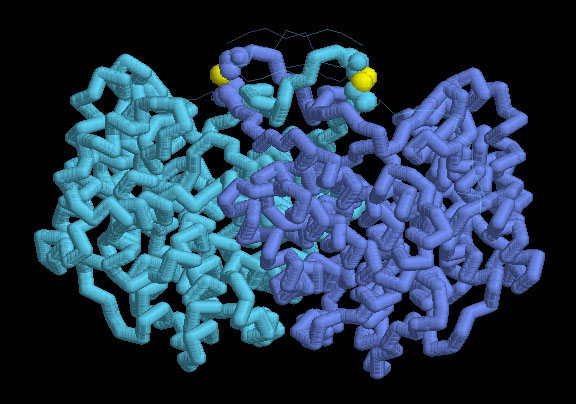|
Inhaltsübersicht | Nanomaschinen | Moleküle | Programme | Kurse | Fun | Links |
||
| > |
Citrate Synthase

Exploring the Structure
Citrate synthase is found in all living cells, so it has been a useful enzyme for comparing differences from organism to organism. In particular, it has been used to study the unusual adaptations in cells that live in extreme environments. Structures have been obtained from organisms that live in very cold environments (see, for instance, PDB entry 1a59, not shown here) and others that live in hot environments. The enzyme shown here, from PDB entry 2ibp, has an interesting structural feature that allows it to resist high temperatures. Each chain has a disulfide linkage that closes the chain into a loop. Looking at the whole structure, we see that these two loops are linked, so even if the structure melts now and then, the two chains stay linked together. This is a trick that is only rarely used by natural proteins--for another amazing example, take a look at the many linked rings in the virus capsid of HK97 (PDB entry 1ohg).
These pictures were created with RasMol. You can create similar pictures by clicking on the accession codes here and picking one of the options under Images and Visualization. To see some of the references that I used to write this Molecule of the Month, click here. Also available are related entries in the PDB as determined by a keyword search on August 28, 2007 for 'Citrate Synthase'.
Next: Jmol Animation
Previous: Supplementing Performance
Last changed by: A.Honegger,